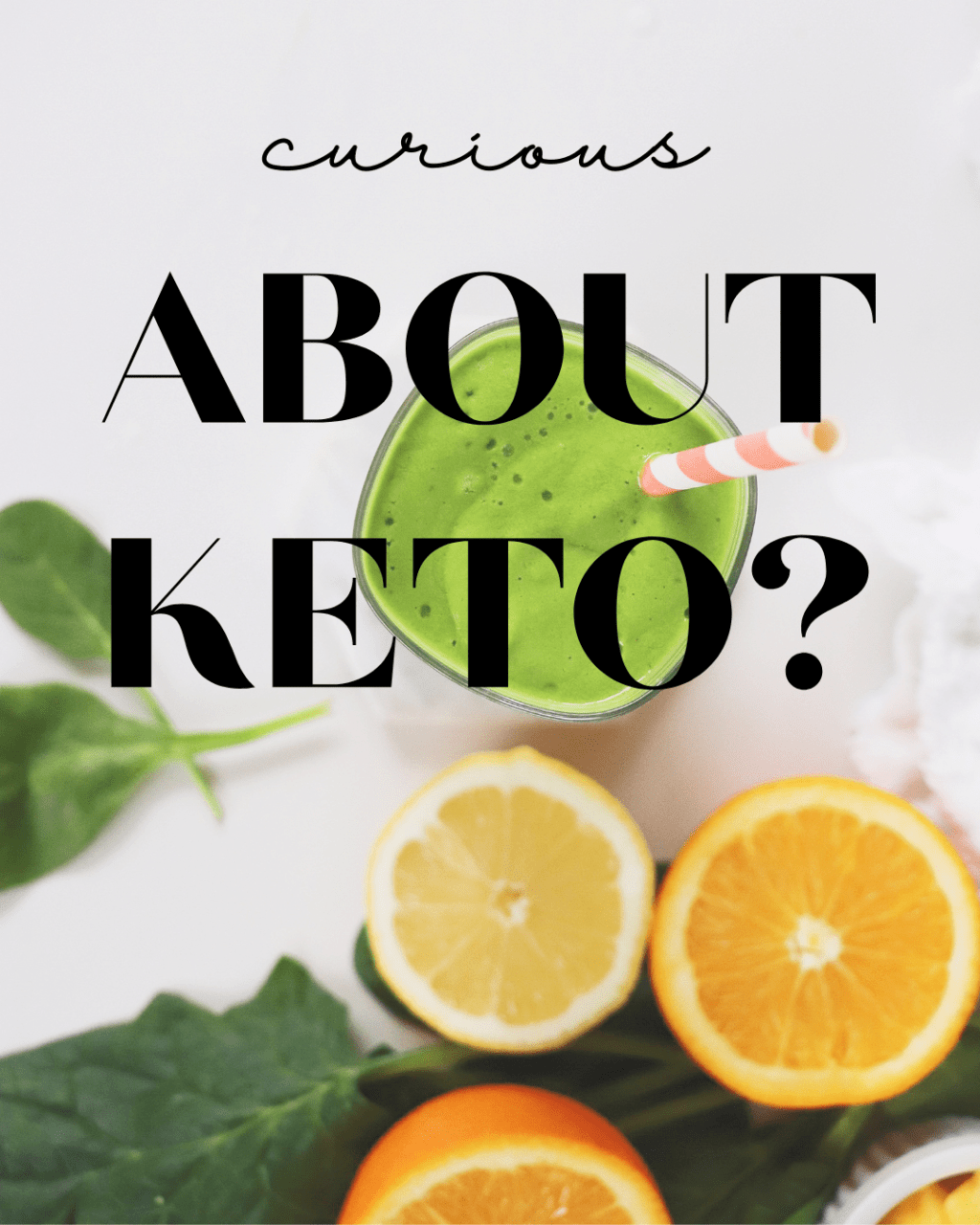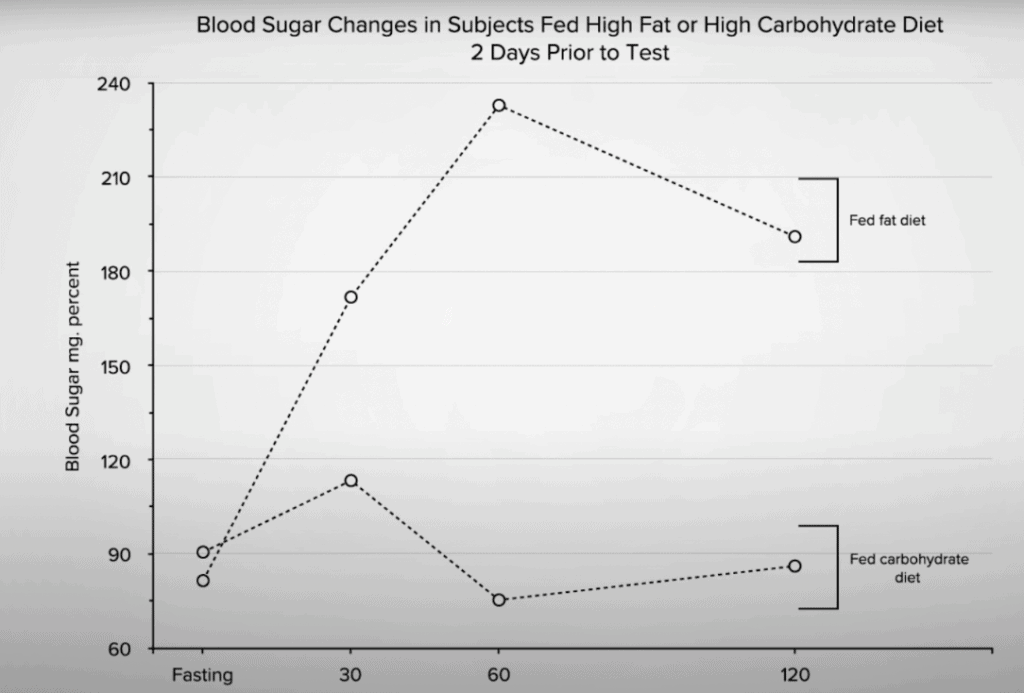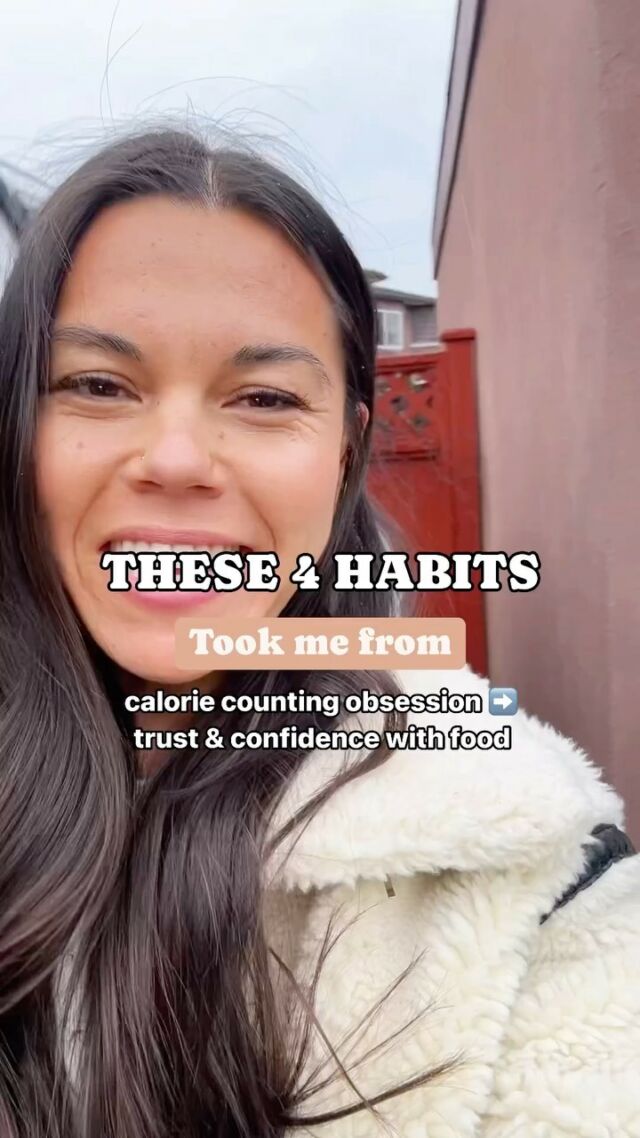It seems like the ketogenic diet (Keto) is everywhere these days. With the promise of weight loss, positive impacts on our health and wellbeing, and the cure for hunger and cravings, no wonder there’s all of this hype! However, are all of these claims true? Today on the blog we do a deep dive into what the ketogenic diet is, where it originated from, the pros and cons of the keto diet, and 3 things you can do instead.

With the promise of reduced appetite, massive amounts of weight loss, and ‘experts’ on podcasts like the Joe Rogan Experience exclaiming that going keto will cure everything from diabetes to neurological disorders, no wonder there is so much hype over the ketogenic diet. But what exactly is it? And are all of these claims true? As intuitive eating registered dietitians, we want to arm you with the facts so that you can make an informed decision on whether this diet is right for you.
In this blog we will cover:
- Keto Diet 101 – What is It and Where Did it Come From?
- What is Ketosis?
- What is the Keto Flu?
- Pros of the Keto Diet
- Cons of the Keto Diet
- 3 Dietitian Approved Alternatives
If you’re particularly interested in any of the above, just click the link to jump to that section!
To cover some of the most common questions right up front, let’s start here –
The rules of the ketogenic diet are far from simple. Not only do you have to restrict your carbohydrates to 5-10% of your caloric intake, you also have to consume moderate amounts of protein while consuming high amounts of fat, which can involve a lot of planning to ensure you remain in ketosis. Read more about this here.
While there are many studies that show short term weight loss by following a low carb keto diet, the research is lacking in long term studies. While we are pulled in with the initial promise of weight loss, these diets are often unsustainable and in fact predictors of long term weight gain. Find out more about this here.
Keto Diet 101 – What is It and Where Did it Come From?
What is the Ketogenic Diet?
What many people don’t know about the keto diet is that it doesn’t just rely on restricting carbohydrates, it also relies on restricting protein. Talk about a double whammy. As if restricting one macronutrient wasn’t hard enough. The keto diet is a pattern of eating that emphasizes high consumption of fat, moderate consumption of protein and extremely low consumption of carbohydrates. While the macronutrient distribution can be highly individualized, it typically follows the pattern of 5-10% of calories coming from carbohydrates, 20% of calories coming from protein, and 70-90% of calories coming from fat. The reason why protein must be restricted is due to the fact that the body will convert excess protein into carbohydrates, through a process known as gluconeogenesis, which interferes with the body’s ability to enter a state of ketosis (more on that in a moment).
While many individuals think of the Atkins diet (that is, the low carb diet that was popularized in the 1960’s by Dr. Robert Atkins) when they hear about keto, due to its similar restriction on carbohydrates, the difference is that the Atkins diet emphasizes consumption of more protein, which inadvertently prevents nutritional ketosis from occurring.
Where did the ketogenic diet come from?
Despite how popular the keto diet has become for the purpose of weight loss in recent years, this diet was initially created to treat individuals with epilepsy.
Since 500 B.C., fasting has been used as a treatment to reduce epileptic seizures. In a nourished state, the body holds approximately 600 g of glycogen (which is our stored form of glucose) within our muscles and liver. In a fasted state, the body will burn these stores for fuel which will last about 2 days. Once these stores are depleted, our body will begin to burn our fat stores for fuel as an evolutionary response to keep us alive. Some of these fats are converted into ketones by your liver, which function to fuel the brain and other parts of the body (this acts as a last resort when the preferred fuel source, glucose, is unavailable).
With this knowledge of how fasting could be used as a treatment for seizures, the ketogenic diet was created. Physicians in the early 1920’s noted that a high fat, moderate protein, and low carb diet was able to mimic the effects of fasting and began testing this diet on patients at the Mayo Clinic. Since then, the ketogenic diet is still used as an effective treatment for epilepsy under medical supervision, especially for individuals who are unresponsive to anti-epileptic medications.
What is Ketosis?
As described above, ketosis is the metabolic state when the body switches from primarily burning glucose for fuel to using fat as its main energy source. When glucose availability decreases, the body will try to create glucose from protein or fat through a process known as gluconeogenesis. However, while on a ketogenic diet, the body has a hard time sustaining glucose production to keep up with the body’s metabolic needs, and therefore will switch to metabolizing fat and producing ketones, through a process known as ketogenesis, to be used as an alternative energy source. While fatty acids cannot cross the blood brain barrier, ketones can provide energy to brain cells. Although the brain much prefers glucose to function optimally, it can survive off of ketones for energy.
While there are many testing devices available on the market, including strips that test for ketones in the urine, these methods have been shown to be highly inaccurate. Testing the blood for ketones is a more accurate way to know if you have fully entered nutritional ketosis, however unless you have consistent access to a lab or are open to using a finger stick that detects beta-hydroxybutyrate (a type of ketone) frequently, this method may not be accessible. Due to this and how highly controlled the diet needs to be in order to drive the body into fat burning mode, many individuals who think they’re in ketosis are likely not.
What is the Keto Flu?
Have you heard of the keto flu? The keto flu is a collection of flu-like symptoms that happen to some individuals when they are transitioning into ketosis. Symptoms may include nausea, vomiting, fatigue, brain fog, irritability, diarrhea, constipation, and head aches. From anecdotal accounts, these symptoms can last for a few weeks to months.
Ready to Transform Your Relationship with Food?
Explore not just what you eat but why you eat, how you feel when you eat and any patterns that affect how you feel or impact any choices you make and start your journey to food freedom today!
Pros of the Keto Diet
It seems like you’re either in or out when it comes to the ketogenic community. There are many proponents of the high fat diet who make far reaching claims on the effects of weight loss, curing certain diseases, and improving metabolic parameters. Let’s dive into what the research says.
Weight loss
The keto diet has been touted as one of the most effective ways to lose weight… in the short term, as there are no long term studies to show its effects.
One reason may be due to the reduction in hunger and cravings one may experience on a high fat diet. Because you are leaning into fat which has more than double the calories per gram than protein or carbohydrate, it may be easier to eat less frequently and in smaller portions. Some research suggests that the reduction in appetite may be due to the high presence of ketones themselves.
While one study in 2013 showed that levels of ghrelin (ie. the hunger hormone) and subjective appetite were lower in adults while in ketosis despite being on a highly calorically restricted diet, after 10 weeks, the participants noted levels of hunger and urges to eat were significantly higher than before their initial weight loss. These results tend to hint at the potentially short term impacts of this diet for some individuals.
Another reason why the keto diet may produce quick and dramatic weight loss results may be due to the loss of water weight. As previously mentioned, the human body can typically hold approximately 600 g of glycogen within its muscles and liver. As glycogen is our body’s way of storing carbohydrates, there may be about 3-4 g of water stored within every gram of glycogen. Through following a ketogenic diet and depleting your glycogen stores, many people experience increased thirst, frequent urination, and dry mouth as the body begins to remove the released water molecules.
‘Reversing’ diabetes
It makes sense why you would want to pursue a diet that claims to be the cure for diabetes. But is this really true? And what does the research say?
A randomized control trial that was conducted over 12 months showed that individuals with HbA1c levels above 6% and BMIs over 25 who followed a low carb ketogenic diet lost more weight and reduced their HbA1C levels more than individuals who followed a moderate carb, low fat, calorie restricted diet. Additionally, the individuals in the low carb ketogenic diet group were more likely to be able to reduce the use of diabetes medications, with some participants fully weaning off metformin. However, this study was small and only conducted over a short time period.
Conversely, some experts suggest that individuals who claim that the keto diet can ‘reverse’ diabetes are actually confusing the symptoms (ie. high blood sugar) with the cause of the disease (carbohydrate intolerance or insulin resistance). While yes, removing carbohydrates will improve blood sugar readings, the disease is still present. Another example of this would be like claiming a gluten free diet ‘cures’ celiac disease. While yes, removing gluten from one’s diet reduces symptoms, the gluten intolerance still remains.
Additionally, while some short term studies show increased weight loss, improved insulin sensitivity, and lowered Hgb A1C by following a ketogenic diet, there is some research to suggest that it may actually worsen the disease in the long term. One study compared the effects of blood sugar in individuals who ate a high fat diet compared to individuals who ate a high carb diet over 2 days. As you can see in the image below, the high fat diet group’s carbohydrate tolerance was much worse than the high carb diet group after consuming the same amount of sugar.

Another study showed that one meal high in fat negatively impacted insulin sensitivity or carbohydrate tolerance within 4 hours of consumption.
Cons of the Keto Diet
Not only is this diet likely difficult to follow correctly, it may also pose more harm than good.
Decreased muscle mass and metabolism
Because the diet requires careful planning to maintain ketosis, it may be difficult to find the right balance of having enough, but not too much, protein. A 2016 review found that following a very low carbohydrate ketogenic diet was associated with decreases in fat-free mass. This may be due to the body trying to break down its lean muscle stores to produce more glucose.
Impact on digestive health and risk of nutrient deficiencies
Given how low the carbohydrate allowance is on a keto diet, many gut friendly foods are restricted, including whole grains, fruit, starchy vegetables, beans, and legumes. Not only does this limit the amount of vitamins, minerals, and antioxidants that make their way into the diet, it severely restricts the amount of fiber that one consumes. Because fiber functions to bulk up our stool and contributes to a diverse and healthy gut microbiome, individuals may experience constipation, diarrhea, bloating, and other digestive issues following this high fat diet.
Low mood
Did you know that up to 90% of our serotonin (the neurotransmitter that regulates our mood, sleep, and appetite) is created in the gut? Following a low carb diet may contribute to lower levels of serotonin and subsequent low mood. We dive more into the function of carbs and why we may crave them here.
Weight cycling and long term weight gain
While the keto diet may be promising for short term weight loss, many individuals find the restrictive nature of the diet to be difficult and unsustainable to follow long term. In fact, the keto diet ranked second to last in the U.S. News and World Report’s list of “Easiest Diet To Follow” in 2018. If you’ve ever felt like a failure because you couldn’t stick to this diet, know that it’s not you, it’s the diet!
Additionally, as we discussed in our post 3 ways to stop yo-yo dieting, following rigid diets like the ketogenic diet may increase your risk of weight cycling (ie. the repetitive cycle of losing and regaining (often more!) weight), which we know increases our risk for certain diseases, including heart disease, fatty liver, and cancer.
Despite what diet culture wants you to think, the reason why you can’t stick to a diet isn’t a lack of willpower or an issue of not having self control, it’s your biology fighting for survival. Our bodies can’t distinguish between a famine or a self imposed diet, and so when we intentionally lose weight, our cells will adapt to drive our weight back up, and often higher than when we started to be better prepared for the next ‘famine’. We dive more into this in our article Why diets don’t work (and 6 steps to take instead).
Increased risk of kidney stones and liver disease
Due to the increased acidity in our blood and urine from being in a prolonged state of ketosis, this may cause the body to excrete more calcium which ends up in our urine. This combination can increase the risk of stone formation in the kidneys. Additionally, following a high fat diet may contribute to the development of dyslipidemia (that is, unhealthy levels of lipids in the blood) and accumulation of fat in the liver.
Promotes disordered eating
Basic psychology shows us that human beings want what we can’t have, so it’s no surprise that any sort of restriction can feel like we’re obsessed with food. Following such a restrictive diet that limits not only one but two macronutrients can promote intense cravings for ‘forbidden’ food and set us up to binge when we can no longer stand the restriction.
Ready to Transform Your Relationship with Food?
Explore not just what you eat but why you eat, how you feel when you eat and any patterns that affect how you feel or impact any choices you make and start your journey to food freedom today!
3 Dietitian Approved Alternatives
So if you’ve come to the end of this article and feel confused about what to do to support your health, don’t worry, we’ve got you covered.
- Include all macronutrients
- If following the ketogenic diet doesn’t seem right for you, there are other patterns of eating, like the Mediterranean diet, that have been shown to improve blood sugar, blood pressure, and cholesterol levels without the need to avoid certain macronutrients. This diet is rich in whole grains, legumes and beans, fruits and vegetables, lean proteins, and olive oil.
- We also teach clients the plate method and adopting positive nutrition or a ‘more not less’ approach. They love that they still have some guidance but in a balanced, sustainable, non restrictive approach.
- Practice mindfulness
- As intuitive eating dietitians, we know that we were born with the ability to know the best way to nourish our body is. However, through years of wading through diet culture, picking up food rules and beliefs along the way, and distrusting our inner signals, it makes sense if you feel lost with how to eat in a way that feels good.
- One tool that we use with our clients in the Make Food Feel Good Community is a mindful food journal. This is different from a food tracker as it explores not only what you eat, but why and how you eat. This tool is meant to compassionately raise your self awareness on what food beliefs you may hold and help you to observe your eating habits. Within our MFFG Program, we help our clients unpack what they learn, reprogram their thoughts and beliefs, and truly learn How to stop feeling guilty after eating for good.
- Reconnect with your body’s wisdom
- After years of dieting, restricting, or overriding our fullness signals, we often feel like we don’t know when our body is asking for fuel or when it’s satisfied. If you’re ready to let go of external dieting rules and become reacquainted with these inner signals, check out our post on How to use the hunger fullness scale properly.
Now Over to You
- Have you ever tried the ketogenic diet? What was your experience like?
- Did anything about the research surprise you?
- Any other questions we may have missed?
Share with us in the comments below or take a screenshot and share it with us over on Instagram! And if you found this post helpful, pass it along to a friend or family member who could benefit from it too!
Looking for More Support?
Looking for support to end the diet cycle, trust your body and learn the nutrition that feels amazing for YOU? Learn more about my Make Food Feel Good Program here where hundreds of women have found lasting success through my proven framework and step-by-step guided support. Let’s Chat!









Leave a Comment & Rate this Recipe